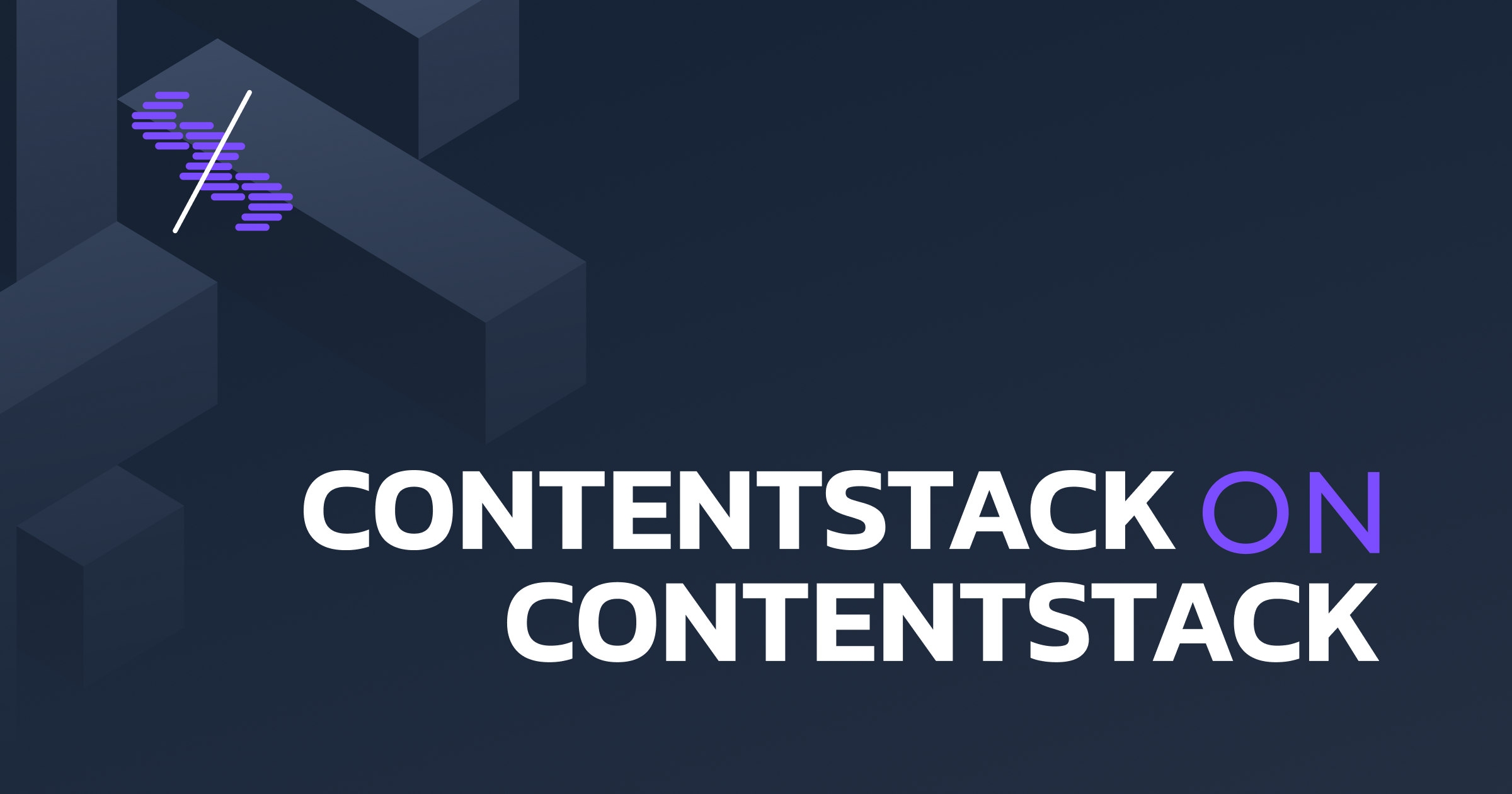10 key questions to set your personalization strategy

We kicked off a project to implement personalization at Contentstack. Here’s what we’ve learned about what questions to ask when starting a personalization project.
Personalization is a top priority for marketers. Us here at Contentstack included.
However, many struggle to deliver personalized experiences that engage customers and drive tangible results.
… Again, us included.
A few months ago, the marketing team met to set the strategy for our personalization efforts, which is our CMO’s top priority for the coming year.
The goal was to get our personalization efforts up and running quickly, so we needed to figure out who was responsible for what and how the work would get done.
These are the questions we asked ourselves.
1. Who owns personalization?
Effective personalization requires a dedicated team. This team should be championed by an executive sponsor (in our case, the CMO) and comprise a core strategy group (Product Marketing, Content, Lifecycle Marketing, and Operations).
Supporting this core team are working groups focused on execution, such as Web Development and Campaign Management. This structure ensures strategic alignment and efficient implementation of your personalization efforts.
2. What are your goals for personalization?
Before diving into tactics, it is important to define your objectives. For instance, are you looking to increase engagement, drive conversions or improve customer satisfaction? (Or, all of the above.)
Clear goals will guide your strategy and help you measure success. Some of our goals included faster conversions to demo requests and higher engagement with key pages such as case studies.
3. What data do you have available?
Personalization relies on data. What data points do you currently collect, and how can they be used to personalize experiences?
Consider customer demographics, behaviors, interests and preferences. We decided to use behavioral data as a starting point since B2B customers typically interact with content that strongly indicates their product interest.
4. How will you unify your data?
Data silos hinder personalization efforts. Do you have a way to unify customer data from various sources into a single customer view?
A real-time Customer Data Platform (CDP) can help you break down silos and create a centralized data foundation. In our case, our recent acquisition of Lytics, a Real-time CDP, paves the way for data unification and activation for personalization.
5. How will you segment your audience?
Segmentation is crucial for delivering targeted experiences. What criteria will you use to segment your audience, and how will you ensure segments are dynamic and updated in real time?
AI-powered segmentation can help you create highly targeted segments based on customer behavior and predictive insights. In our case, prospects span more technical and business-focused audiences and customers from specific industries, so these were our focus areas for defining our first personalization projects.
6. What channels will you personalize?
Personalization should extend across all customer touchpoints to maximize effectiveness. Which channels are most important for your audience, and how can you orchestrate consistent, personalized experiences across web, email, mobile, ads and in-store?
It's normal for a first personalization project to start with a single channel before expanding further; for instance, we started with our website.
7. What content will you personalize?
Content is at the heart of personalization. What content can you tailor to individual preferences, and how will you ensure content is relevant and engaging?
We created a list of high-value pages with high engagement and high potential for personalization. These included our homepage, case studies page, and platform pages like headless CMS. Then we identified what we could personalize on those pages, and then the content creation could begin, supported by on-brand GenAI to support production at scale.
8. What technology will you use to support personalization?
The right technology is essential for effective personalization. Do you have a CDP, personalization engine, or other tools in place to support your strategy?
Contentstack's powerful real-time CDP (Lytics) and Personalize provide a comprehensive solution for data unification, segmentation and content personalization.
9. How will you ensure compliance with privacy regulations?
Data privacy is paramount. How will you ensure compliance with GDPR, CCPA and other regulations?
Contentstack's real-time CDP offers built-in consent management and data residency controls to help you navigate privacy requirements. In our case, we also started small by working with behavioral data (clicks/interactions).
10. How will you start small, move quickly and set yourself up for success?
It’s easy to get overwhelmed by an enormous project like personalization. Our biggest lesson learned in setting our personalization strategy was to start with a manageable scope and select high-impact use cases that we could scale as we went.
Luckily, Contentstack provides world-class resources and support to help you stay ahead of the curve with personalization.
Activate your data and transform customer experiences
Personalization can be complex, but the rewards are worth the effort. You can lay the groundwork for a successful personalization strategy by asking yourself these ten key questions.
Contentstack is here to help you every step of the way.
Our real-time CDP and Personalize provide the tools you need to unify your data, segment your audience, personalize your content at scale and measure your results.
With Contentstack, you can deliver exceptional customer experiences that drive engagement, conversions and revenue.
When you’re ready to learn more, schedule a demo to see personalization in action.
About Contentstack
The Contentstack team comprises highly skilled professionals specializing in product marketing, customer acquisition and retention, and digital marketing strategy. With extensive experience holding senior positions at renowned technology companies across Fortune 500, mid-size, and start-up sectors, our team offers impactful solutions based on diverse backgrounds and extensive industry knowledge.
Contentstack is on a mission to deliver the world’s best digital experiences through a fusion of cutting-edge content management, customer data, personalization, and AI technology. Iconic brands, such as AirFrance KLM, ASICS, Burberry, Mattel, Mitsubishi, and Walmart, depend on the platform to rise above the noise in today's crowded digital markets and gain their competitive edge.
In January 2025, Contentstack proudly secured its first-ever position as a Visionary in the 2025 Gartner® Magic Quadrant™ for Digital Experience Platforms (DXP). Further solidifying its prominent standing, Contentstack was recognized as a Leader in the Forrester Research, Inc. March 2025 report, “The Forrester Wave™: Content Management Systems (CMS), Q1 2025.” Contentstack was the only pure headless provider named as a Leader in the report, which evaluated 13 top CMS providers on 19 criteria for current offering and strategy.
Follow Contentstack on LinkedIn.






.svg?format=pjpg&auto=webp)
.svg?format=pjpg&auto=webp)
.png?format=pjpg&auto=webp)






.png?format=pjpg&auto=webp)
.jpeg)

